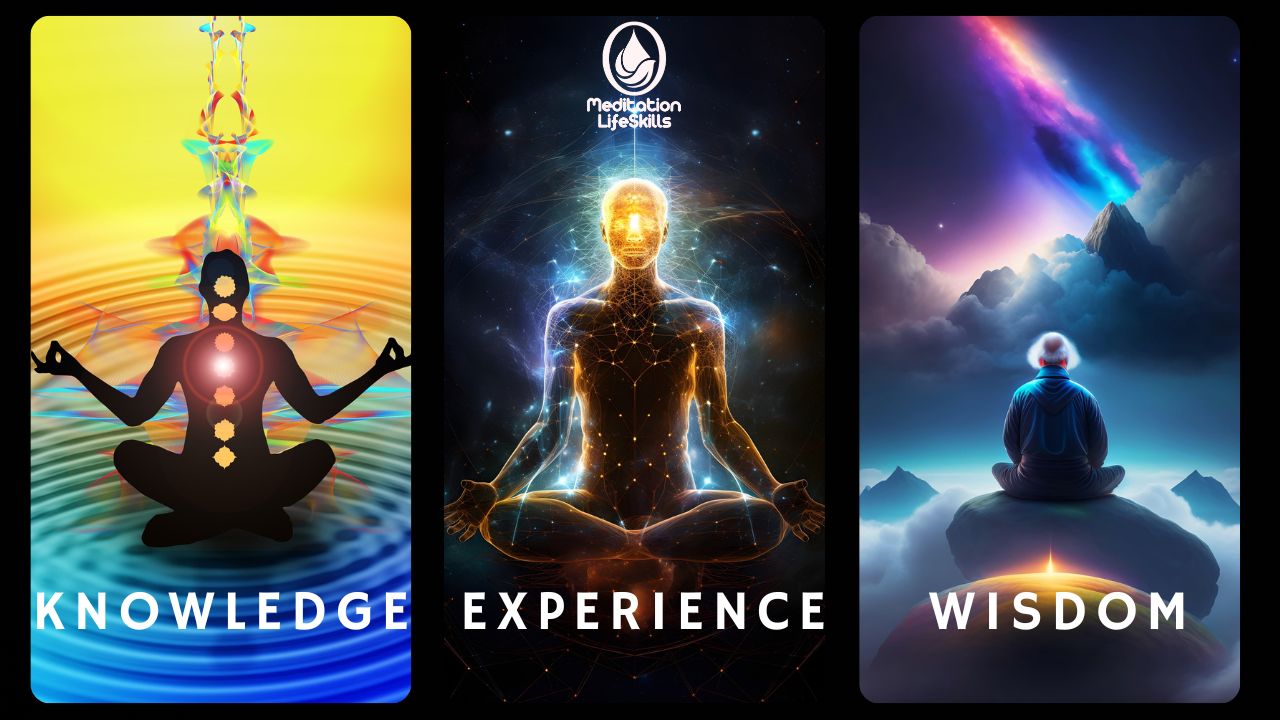In the midst of our busy and chaotic lives, it can be challenging to quiet our minds and fully immerse ourselves in the present moment. But with the right combination of soothing melodies and gentle rhythms, we can create an environment that is conducive to relaxation and inner peace.
GET STARTED TODAY WITHOUT ANY RISK!
Get 7 Days of Unlimited Access Right Now
for Free When You Download Our App!
A life of transformation begins with action. There are seven stages of meditation instruction on a single platform. Live monthly Zoom coaching and training sessions.
Get unlimited free access to the Meditation Life Skills app for 7 days by downloading it now! Visit MeditationLifeSkills.com.
Are you looking to enhance your meditation practice and find a deeper state of serenity? Look no further than the power of relaxing music.
In this article, we will explore the profound impact that relaxing music can have on your meditation practice. From calming the mind and reducing stress to promoting a sense of tranquility and enhancing focus, the benefits of incorporating music into your meditation routine are undeniable.
Whether you are a seasoned meditator or just starting out on your journey, join us as we delve into the world of soothing sounds and discover the transformative power of music in finding serenity.
The Connection Between Music and Meditation
Music has been used for centuries as a tool for relaxation, healing, and spiritual transformation. When combined with meditation, it can amplify the benefits and deepen the experience.
The connection between music and meditation lies in their ability to affect our brainwaves and alter our state of consciousness. Just as meditation helps us achieve a state of calm and clarity, music has the power to evoke emotions and create a sense of tranquility.
In fact, studies have shown that listening to relaxing music activates the same areas of the brain associated with meditation, such as the prefrontal cortex and the parietal lobe.
This suggests that music can enhance the meditative state by promoting relaxation, reducing stress, and improving focus. By incorporating music into your meditation practice, you can create a harmonious synergy that allows you to go deeper into your inner journey.
The Benefits of Incorporating Music into Meditation
The benefits of incorporating music into your meditation practice are numerous and far-reaching. Firstly, relaxing music can help calm the mind and reduce mental chatter, making it easier to enter a meditative state.
When we listen to soothing melodies, our brainwaves begin to synchronize with the rhythm of the music, leading to a state of deep relaxation and heightened awareness. This can greatly enhance our ability to focus and stay present during meditation.
Furthermore, music has the power to evoke emotions and create a sense of peace and tranquility. It can serve as a bridge between the conscious and subconscious mind, allowing us to tap into our innermost thoughts and feelings. This emotional connection can lead to a release of stress and tension, promoting a profound sense of relaxation and well-being.
In addition, research has shown that music can have a positive impact on our physical health. It has been found to reduce heart rate, lower blood pressure, and decrease levels of cortisol, the stress hormone. By reducing stress and promoting relaxation, music can support a healthy immune system and improve overall well-being.
The Science Behind Relaxing Music and Its Impact on the Brain
The relationship between music and the brain has been a topic of fascination for scientists and researchers. Through advances in neuroscience, we are beginning to understand the profound impact that music has on our brainwaves and mental states.
When we listen to relaxing music, our brainwaves naturally start to synchronize with the rhythm and tempo of the music. This phenomenon, known as "entrainment," occurs when our brain waves match the frequency of the external stimulus, in this case, the music.
As a result, our brain enters a state of coherence and harmony, leading to a deep sense of relaxation and well-being.
Moreover, research has shown that music can activate the release of neurotransmitters such as dopamine and serotonin, which are responsible for regulating mood and emotions. This explains why music has the power to uplift our spirits and create a sense of joy and tranquility.
Additionally, music can stimulate the production of endorphins, the body's natural painkillers, promoting a sense of relaxation and euphoria.
Different Types of Relaxing Music for Meditation
When it comes to choosing the right music for your meditation practice, there is a wide variety of options available. Each genre and style of music can evoke different emotions and create a unique atmosphere for your meditation session. Here are some popular types of relaxing music that are commonly used for meditation:
1. Ambient Music: Ambient music is characterized by its atmospheric and ethereal qualities. It often consists of long, sustained tones and gentle melodies that create a sense of spaciousness and tranquility. Ambient music is particularly effective for deepening relaxation and promoting a meditative state.
2. Nature Sounds: Nature sounds, such as flowing water, chirping birds, and rustling leaves, can be incredibly calming and grounding. They can transport us to natural environments and help us feel connected to the earth. Nature sounds are especially beneficial for outdoor meditation or for creating a peaceful ambiance in indoor meditation spaces.
3. Instrumental Music: Instrumental music, such as classical or instrumental versions of popular songs, can be soothing and conducive to meditation. The absence of lyrics allows the mind to focus solely on the music and the present moment. Instrumental music with slow tempos and gentle melodies is ideal for promoting relaxation and inner peace.
4. Binaural Beats: Binaural beats are a type of auditory illusion created by playing two slightly different frequencies in each ear. This creates a third frequency in the brain, known as the binaural beat. Different frequencies are associated with specific mental states, such as relaxation, focus, or deep meditation. Binaural beats can be a powerful tool for altering brainwaves and inducing a meditative state.
How to Choose the Right Music for Your Meditation Practice
Choosing the right music for your meditation practice is a personal and subjective process. What works for one person may not resonate with another.
Here are some tips to help you choose the right music for your meditation sessions:
1. Experiment: Take the time to explore different genres and styles of music to find what resonates with you. Listen to samples or short clips of music before committing to a full-length track or album.
2. Consider the Mood: Think about the mood and atmosphere you want to create during your meditation practice. Do you prefer a more serene and peaceful ambiance, or do you want something more energizing and uplifting? Consider the emotions and mental states you want to evoke and choose music accordingly.
3. Follow Your Intuition: Trust your intuition when choosing music for meditation. Pay attention to how different tracks make you feel and choose music that resonates with you on a deep level. Trust that your subconscious mind knows what is best for your meditation practice.
4. Create a Playlist: Once you have found music that you enjoy and find conducive to meditation, create a playlist that you can use during your practice. This will save you time and effort in searching for new tracks each time you meditate.
Tips and Techniques for Incorporating Music into Your Meditation Routine
Now that you have selected the perfect music for your meditation practice, here are some tips and techniques for incorporating it into your routine:
1. Set the Mood: Before you begin your meditation, create a calm and peaceful environment. Dim the lights, light a candle, or burn some incense to create a soothing atmosphere. This will help signal to your mind and body that it's time to relax and enter a meditative state.
2. Use Headphones: If possible, listen to your chosen music using headphones. This will help to minimize distractions and create a more immersive experience. It will also allow you to fully appreciate the nuances and subtleties of the music.
3. Focus on the Music: During your meditation, allow the music to become the object of your focus. Direct your attention to the melodies, rhythms, and textures of the music. If your mind starts to wander, gently bring your focus back to the music and the present moment.
4. Sync Your Breath with the Music: Syncing your breath with the rhythm of the music can deepen your relaxation and enhance your meditation practice. As you inhale, imagine the music flowing into your body, and as you exhale, release any tension or stress. Allow the music to guide the pace and depth of your breath.
Popular Relaxing Music Artists and Albums for Meditation
If you're looking for specific recommendations, here are some popular relaxing music artists and albums that are perfect for meditation:
1. Deuter: Deuter is a renowned composer and multi-instrumentalist known for his beautiful and soothing music. His albums, such as "Nada Himalaya" and "Reiki Hands of Love," are highly recommended for meditation.
2. Ludovico Einaudi: Ludovico Einaudi is an Italian composer whose minimalist piano compositions are deeply calming and introspective. Albums like "Divenire" and "Una Mattina" are perfect for creating a peaceful ambiance during meditation.
3. Snatam Kaur: Snatam Kaur is a devotional singer and songwriter who blends traditional Sikh chants with contemporary melodies. Her albums, such as "Grace" and "Beloved," are uplifting and spiritually nourishing.
4. Brian Eno: Brian Eno is a pioneer of ambient music, and his albums have been widely used for meditation and relaxation. Albums like "Music for Airports" and "Apollo: Atmospheres and Soundtracks" create a serene and otherworldly atmosphere.
Online Resources for Finding and Streaming Relaxing Music
Fortunately, there are many online resources available for finding and streaming relaxing music for meditation. Here are some popular platforms and websites to explore:
1. Spotify: Spotify is a popular music streaming platform that offers a wide range of relaxing music playlists and albums. You can search for specific artists or genres, or explore curated playlists specifically designed for meditation and relaxation.
2. YouTube: YouTube is a treasure trove of relaxing music for meditation. Many artists and meditation channels offer full-length tracks or playlists that you can listen to for free. Simply search for keywords like "relaxing music for meditation" or "ambient music."
3. Calm: Calm is a meditation app that not only provides guided meditations but also offers a selection of relaxing music tracks and playlists. You can customize your meditation experience by choosing music that aligns with your preferences and goals.
4. Insight Timer: Insight Timer is a popular meditation app that features a vast library of guided meditations, music tracks, and ambient sounds. You can search for specific types of music or explore curated playlists created by the Insight Timer community.
Creating Your Own Personalized Meditation Playlist
While pre-made playlists and albums can be a great starting point, creating your own personalized meditation playlist can add an extra layer of intention and personalization to your practice. Here are some steps to help you create your own meditation playlist:
1. Choose a Theme: Decide on a theme or mood for your playlist. It could be relaxation, focus, gratitude, or any other intention you want to set for your meditation practice.
2. Select a Variety of Tracks: Choose a variety of tracks that resonate with your chosen theme. Include different genres, styles, and artists to create a diverse and engaging playlist.
3. Consider Transitions: Think about the flow of your playlist and how each track transitions into the next. Smooth and seamless transitions can help create a more immersive and uninterrupted meditation experience.
4. Add Variety: Experiment with different types of music, such as instrumental, nature sounds, or chants. Adding variety to your playlist can keep your meditation practice fresh and interesting.
5. Update and Evolve: As your meditation practice evolves, don't be afraid to update and modify your playlist. Add new tracks that resonate with your current state of mind and remove ones that no longer serve you.
Conclusion: Enhancing Your Meditation Practice with Relaxing Music
In conclusion, the transformative power of relaxing music in enhancing your meditation practice is undeniable. By incorporating soothing melodies and gentle rhythms into your meditation routine, you can create a harmonious environment that promotes relaxation, focus, and inner peace.
Whether you choose ambient music, nature sounds, instrumental tracks, or binaural beats, there is a vast array of options available to suit your preferences and goals.
Explore different genres, experiment with different artists, and trust your intuition when choosing music for your meditation sessions. Remember, the journey to finding serenity begins with the power of music.















